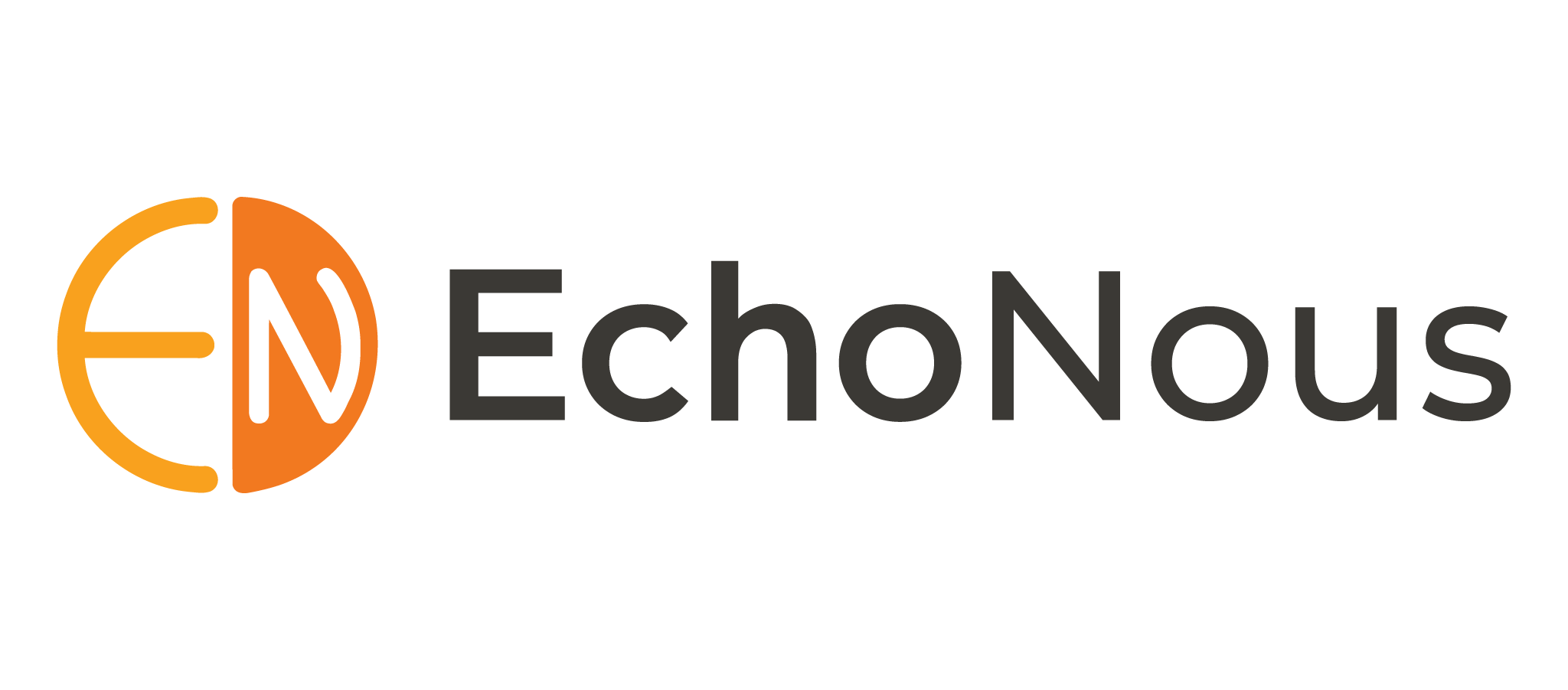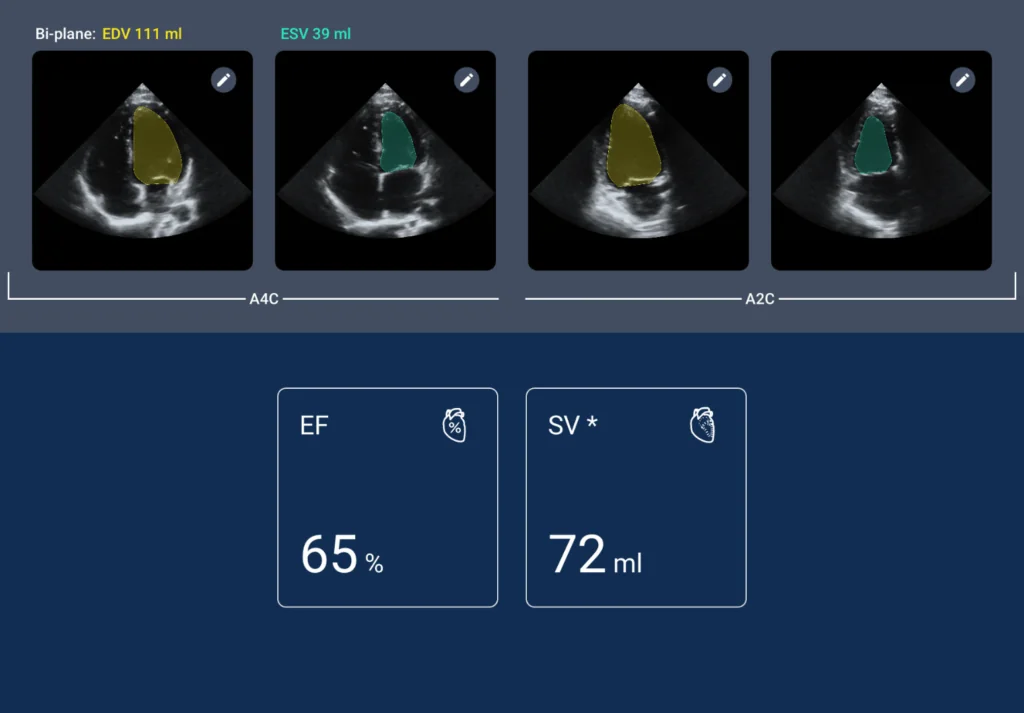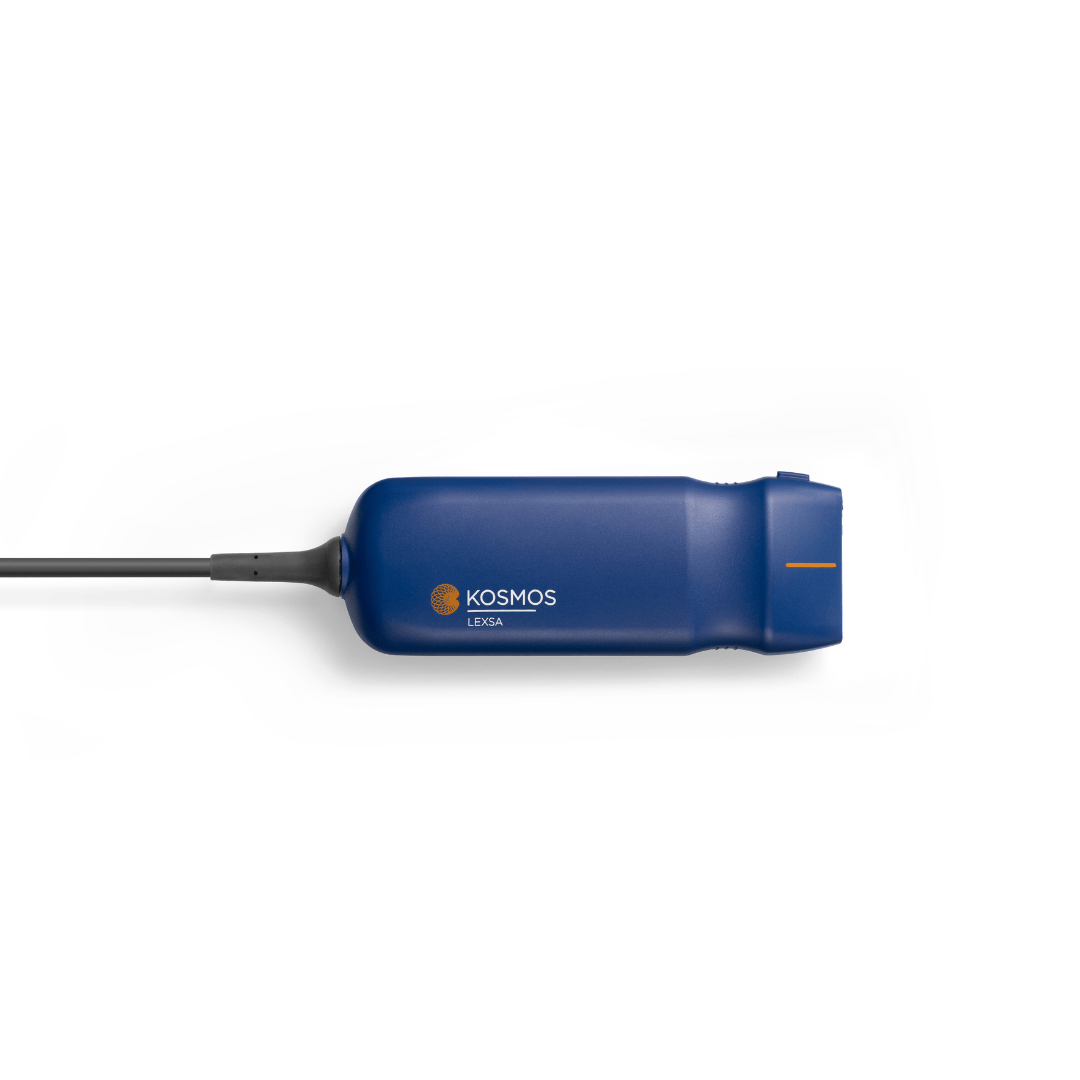The Transformative Role of Point-of-Care Ultrasound (POCUS) in Enhancing Clinical Decision-Making: Insights from Dr. Joshua Guttman
Transforming Healthcare with POCUS
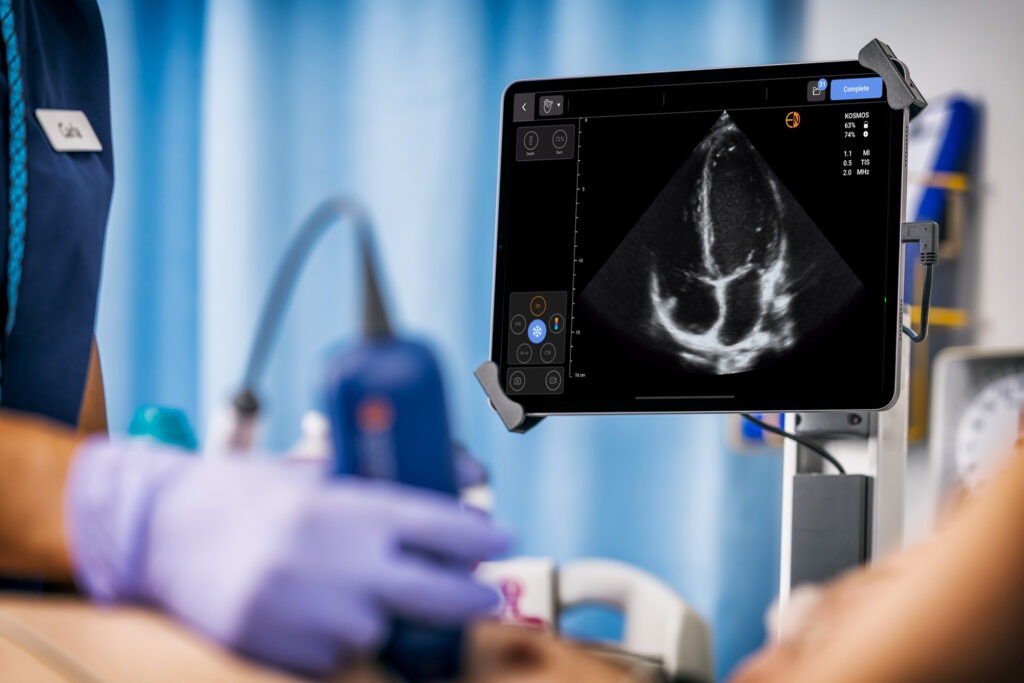
Point-of-care ultrasound (POCUS) has rapidly become essential for clinicians across various medical specialties. Its ability to deliver real-time diagnostic information makes it invaluable, especially in emergency and critical care settings.
Dr. Joshua Guttman, an expert in point-of-care ultrasound and academic emergency medicine, sheds light on the transformative power of point-of-care ultrasound and the barriers that healthcare providers face in adopting it.
Meet Dr. Joshua Guttman: Pioneering Ultrasound in Emergency Medicine
Dr. Joshua Guttman is an Associate Professor of Emergency Medicine at Emory University School of Medicine and the Founder and CEO of Peachtree POCUS. A leader in point-of-care ultrasound, Dr. Guttman has advanced clinical practice and education through his work, including a five-year tenure as the fellowship director for emergency ultrasound at Emory.
He is also a nationally recognized expert in POCUS reimbursement and serves as chair of the American College of Emergency Physicians, Emergency Ultrasound Section coding and reimbursement committee.
The Start of Dr. Guttman’s Journey with Ultrasound
For Dr. Guttman, the journey with ultrasound began early in his residency, igniting a passion that has shaped his career. He recalls his first encounter with ultrasound vividly: “It was a pregnant woman who was coming in with severe abdominal pain. I didn’t know how to use the ultrasound yet, and I wanted to make the diagnosis immediately.”
During this critical case, the attending physician used ultrasound to detect free fluid in the abdomen, leading to a prompt diagnosis of a ruptured ectopic pregnancy.
“We put the probe on the patient. We saw free fluid in the abdomen, so we called the obstetric team,” Dr. Guttman explained.
The patient was rushed to surgery, and this experience left a lasting impression on him. It opened his eyes to how POCUS could improve clinical decision-making and patient outcomes in emergencies.
Why POCUS is a Game-Changer in Emergency Medicine
In emergency medicine, POCUS plays a pivotal role in diagnosing time-sensitive conditions like cardiac tamponade, deep vein thrombosis, and internal bleeding, just to name a few.
Dr. Guttman highlights its ability to enhance decision-making at the bedside: “And I just got excited by the ability to make decisions right away as a classic emergency doctor, and ultrasound allowed me to do that. So it was better for patients and allowed for faster and more accurate diagnoses.”
The capability to diagnose and treat conditions in real time reduces the need for lengthy waits for traditional imaging and improves patient outcomes. This immediacy is a defining characteristic of emergency care, and time is of the essence.
Whether using a handheld ultrasound or a portable ultrasound machine, clinicians benefit from the speed and accessibility that POCUS offers [1].
POCUS in Other Specialities: Expanding the Horizon
While POCUS has traditionally been a mainstay in emergency medicine, its applications are growing in other medical specialties such as internal medicine, primary care, critical care, and family medicine.
One of the most critical shifts in healthcare is the democratization of technology, allowing clinicians in smaller settings or underserved areas to use tools like POCUS effectively.
Dr. Guttman states, “To spread point-of-care ultrasound, it needs to grow beyond emergency medicine into family medicine and internal medicine, being able to communicate from one specialty to another.”
POCUS’s utility extends beyond the emergency department to more routine care settings. In internal medicine, clinicians use portable ultrasound to evaluate fluid in the lungs or abdomen, diagnose heart conditions, and guide procedures like central line placements.
Family physicians and internists increasingly turn to POCUS for conditions such as gallstones, pneumonia, and kidney stones, making it a staple in patient care.
Dr. Guttman also underscores the importance of POCUS in areas where access to advanced imaging modalities, like CT scans or MRIs, is limited [2].
Rural healthcare settings particularly benefit from this mobile diagnostic capability: “I’m talking about the rural community department or the private practice that says – now my patients are getting better scans within a more reasonable amount of time because before, they had no access…..[to advanced technology], and we can change that.”
Key Benefits of POCUS: Improving Diagnostic Accuracy and Reducing Costs
The cost of ultrasound machines has also dropped considerably over the past decade, making them accessible for small practices and rural hospitals.
Handheld ultrasound devices now offer the same image quality as larger cart-based systems. In contrast, AI-integrated echo devices provide real-time measurements and analyses, empowering clinicians to make confident decisions at the bedside.
The adoption of POCUS across specialties enhances diagnostic accuracy and has a financial benefit for healthcare systems. It also improves patient safety by reducing exposure to radiation from traditional imaging modalities like CT scans.
Dr. Guttman adds, “The cost can be a barrier to private practice physicians, although, with products like Kosmos, it’s come down to a point where now it’s affordable.”
Overcoming Barriers to POCUS Adoption

Despite its numerous benefits, several barriers prevent the widespread adoption of ultrasound across healthcare institutions. One significant challenge is the perceived complexity of learning ultrasound.
For many clinicians, particularly those practicing for years, acquiring a new skill set seems daunting.
Dr. Guttman acknowledges this concern but believes it can be overcome: “I believe the barrier to starting is just the education. Physicians might think, ‘I know this is important, but can I learn? I’m older, have advanced in my career, and finished my training. Can I still learn a new skill?”
According to Dr. Guttman, starting with simple applications like lung ultrasound for shortness of breath is an effective way for clinicians to build confidence in using this powerful diagnostic tool.
Another obstacle involves concern about malpractice. Some physicians fear potential legal issues if they make incorrect interpretations.
However, Dr. Guttman reassures clinicians: “There’s more malpractice risk in not doing it than doing it since it’s become the standard in many ways.”
With proper training, healthcare providers can mitigate these risks and use ultrasound to enhance their diagnostic capabilities safely.
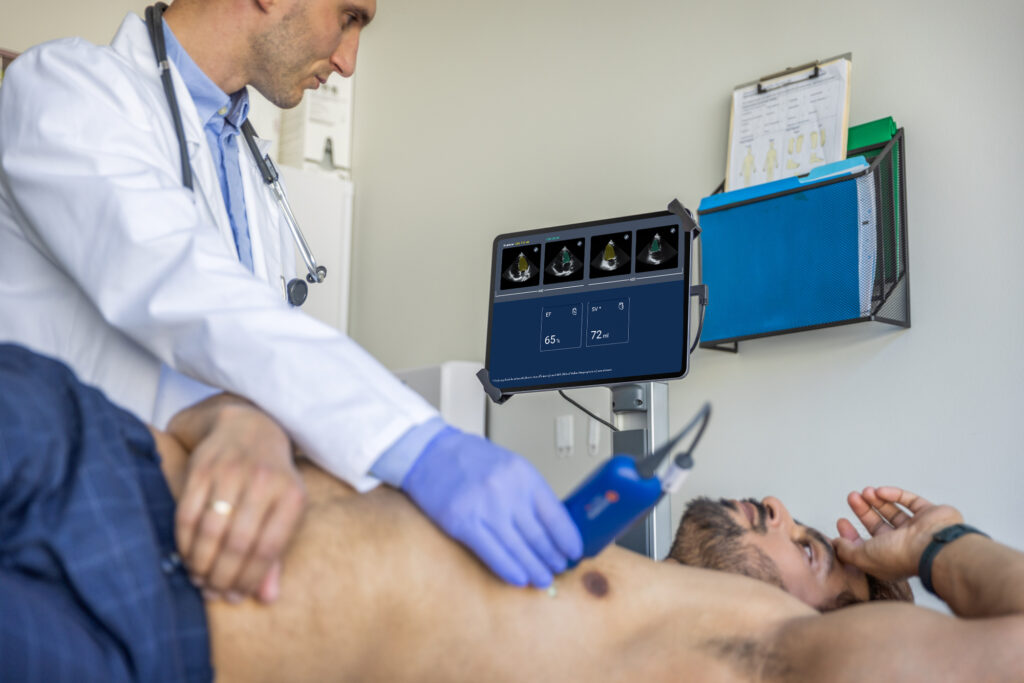
Explore how cardiac POCUS and mobile ultrasound can improve emergency medicine at your healthcare facility.
Streamlining Workflow and Operational Efficiency with POCUS
Workflow integration remains challenging when adopting POCUS, particularly in busy hospital environments. Incorporating ultrasound into daily routines can seem like an additional burden for clinicians with numerous responsibilities. Dr. Guttman, however, considers it a barrier that can be overcome.
“They already have their established workflow and way of doing things, which can sometimes create a barrier to change. For example, the ultrasound machine might be far away, which can be inconvenient. Entering patient information is also cumbersome, adding to the difficulty. However, these are all barriers that clinicians can overcome. It’s not that hard- it just requires someone who understands the process, walks through the challenges, and helps navigate around them.”
By developing streamlined workflows, healthcare systems can ensure that ultrasound scans are easily saved and shared, reducing redundancy and increasing efficiency. The ability to reference these images later is particularly useful when collaborating with other specialties, such as cardiology or radiology.
Systems like Kosmos help facilitate these efficiencies, making real-time diagnostic integration more seamless.
In support of archiving images, Dr. Guttman says, “I need the image to be archived, and it must be easily accessible for reference. It’s essential that people inherently understand the need for proof.”
Continuing Education and the Role of AI in POCUS
Ongoing education is key to successfully adopting ultrasound in clinical practice [3]. One-off training sessions, while helpful, are insufficient for mastering the skill. Dr. Guttman stresses the importance of continuous learning:
“You can’t take one lesson to learn to drive a car. You can understand the mechanics behind it, but it takes a certain number of hours of practice to perfect it,” he explains, emphasizing that ultrasound proficiency requires time, practice, and regular feedback.
Alongside education, integrating artificial intelligence (AI) in ultrasound is revolutionizing how clinicians use the technology. AI helps interpret images and make critical measurements, offering additional support to clinicians, particularly those new to ultrasound.
Dr. Guttman believes that AI can significantly enhance the usability of POCUS, especially with the added advantage of Kosmos AI providing a number for ejection fraction:
“I mean, AI is exploding. I love how it’s used to break down barriers so more people are comfortable using it. One example I like (and the Kosmos does this) is that it measures ejection fraction. Helping you measure that number gives the user more confidence while using it.”
“A novice physician can easily pick up the probe now and be able to communicate to the cardiologist or hospitalist that they’re admitting to.”
Automating aspects such as the ejection fraction calculator and AI, including echo AI, ensures clinicians can provide more precise data when consulting specialists. This not only boosts confidence but also improves the overall quality of care.
The Future of POCUS in Medical Education
Medical education is evolving rapidly to include ultrasound in training physicians, residents, and medical students [4,5].
Dr. Guttman remembers how he started, “I got into the educational component of ultrasound. I ran a residency ultrasound curriculum at my first job out of fellowship.”
Dr. Guttman believes that POCUS will be a standard part of training for most medical professionals in the future: “Education is the biggest barrier, but it also plays a crucial role in overcoming challenges. Once clinicians have some education, ongoing learning becomes essential. Learning ultrasound is a skill that needs to be continually developed.”
Simulation-based education and virtual learning tools are becoming more common, allowing students to practice with portable ultrasound devices before entering real clinical environments. Integrating AI into ultrasound education further enhances this experience, giving students real-time feedback as they learn to perform scans and make diagnoses.
Looking Ahead: The Future of POCUS in Healthcare
Looking forward, Dr. Guttman envisions a future where POCUS becomes a routine part of clinical practice, much like the stethoscope: “I want everyone to be using it like they use their stethoscope. They should have the newest equipment. This should be the norm, and that’s what I want to see.”
His company, Peachtree POCUS, is working to make this vision a reality by helping healthcare institutions implement ultrasound programs that are not only clinically effective but also financially sustainable. Dr. Guttman emphasizes that these programs must succeed: “POCUS needs to be either profitable or at least cost-neutral.”
Conclusion
The role of point-of-care ultrasound in healthcare is rapidly expanding, with profound implications for patient care. From improving diagnostics accuracy to enhancing clinical decision-making, POCUS has the potential to revolutionize the way healthcare is delivered. Dr. Guttma’s insights into the barriers and benefits of ultrasound adoption, combined with the integration of AI, highlight the exciting possibilities that lie ahead for POCUS. As more clinicians embrace this powerful tool, ultrasound will undoubtedly become indispensable to modern medicine.
Ready to bring POCUS into your practice? Discover how EchoNous can help you with AI-enhanced portable ultrasound devices like Kosmos, which are designed to streamline diagnostics.
References
- Blachford, A. (2021, March 17). Point-of-Care ultrasound in urgent care: a game changer for the practice—and the practitioner. Journal of Urgent Care Medicine.
- Fraleigh, C. D. M., et al. (2022). Point-of-care ultrasound: An emerging clinical tool to enhance physical assessment. The Nurse practitioner, 47(8), 14–20.
- Ramgobin, D., et al. (2022). POCUS in Internal Medicine Curriculum: Quest for the Holy-Grail of Modern Medicine. Journal of Community Hospital Internal Medicine Perspectives, 12(5), 36–42.
- Dupriez, F., et al. (2024). Point-of-Care Ultrasound training in undergraduate education in the European Union: current situation and perspectives. The Ultrasound Journal, 16(1).
- Gilbertson, E. A., et al. (2020). Point of care ultrasound: the next evolution of medical education. Annals of translational medicine, 8(14), 846.
